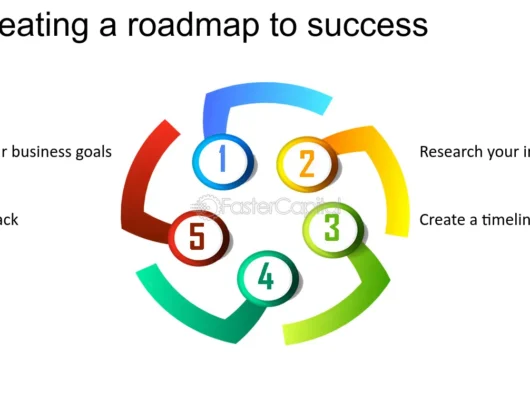In the digital era, social media has become an essential component of any successful marketing strategy.
With billions of active users across platforms like Facebook, Instagram, TikTok, LinkedIn, and Twitter, brands have unprecedented opportunities to connect with their audience, build their reputation, and boost sales.
This article explores the key strategies that have helped businesses achieve social media marketing success.
1. Know Your Audience: The Foundation of Social Media Success
One of the most critical factors for success in social media marketing is knowing your audience inside and out. Every brand must identify their target demographics, including their preferences, behaviors, and online habits. This ensures that your content resonates and speaks directly to their needs.
For example, platforms like TikTok cater to a younger audience, while LinkedIn is more suitable for B2B marketing. By understanding which platforms your audience spends time on, you can tailor your marketing efforts for maximum engagement.
Key Takeaway: Conduct thorough audience research to identify who they are, what they want, and where they spend their time. Use this data to create content that adds value to their lives.
2. Consistency is Key: Building a Strong Social Presence
Successful social media marketing relies on consistent posting. Regularly sharing content not only keeps your brand top of mind but also improves your visibility within platform algorithms. However, consistency doesn’t mean spamming your audience; it means maintaining a steady stream of high-quality content that provides value, whether it’s educational, entertaining, or inspirational.
Tools like social media schedulers (e.g., Hootsuite, Buffer) help maintain a regular posting schedule, ensuring you never miss the best times to post for engagement.
Key Takeaway: Stay consistent with your posts to build a loyal and engaged following. Use social media tools to plan and schedule content in advance.
3. Content is King: Focus on Value-Driven Posts
Content quality is a significant determinant of social media marketing success. Instead of posting for the sake of posting, businesses should focus on creating high-quality, value-driven content that educates, entertains, or inspires their audience. This can range from eye-catching visuals, informative articles, and helpful tips to behind-the-scenes videos and interactive polls.
For example, Red Bull has built a strong social media presence by posting thrilling, extreme sports content that perfectly aligns with their brand image. Their engaging, visually stunning posts keep followers coming back for more.
Key Takeaway: Deliver value through your content. Understand what your audience wants and create posts that resonate with them, whether through educational content, entertainment, or inspiration.
4. Leverage Influencer Marketing: Amplify Your Reach
Influencer marketing is one of the most powerful tools in social media marketing today. By partnering with influencers who have large and engaged followings, brands can amplify their message and reach new audiences.
Influencers have built trust with their followers, which means their endorsement can lead to higher engagement and conversions. Brands like Daniel Wellington have successfully used influencer marketing to increase sales and grow their brand globally.
Micro-influencers (those with smaller but highly engaged audiences) can be especially effective for niche brands. They tend to have strong, authentic relationships with their followers and can provide a higher return on investment (ROI) for targeted marketing efforts.
Key Takeaway: Collaborate with influencers who align with your brand values to expand your reach and build trust with new audiences.
5. Engage with Your Audience: Two-Way Communication
Social media success isn’t just about broadcasting content—it’s about fostering meaningful conversations. Engaging with your audience by replying to comments, direct messages, and mentions builds relationships and enhances brand loyalty. Consumers want to feel heard, and when brands actively engage, they build stronger connections.
For example, Wendy’s has earned social media fame for its witty, humorous replies on Twitter, which not only engage users but also align with its playful brand personality. By creating entertaining dialogue with followers, Wendy’s has built a loyal and enthusiastic fanbase.
Key Takeaway: Prioritize interaction with your followers by responding to their questions, comments, and feedback. Build relationships that foster trust and loyalty.
6. Utilize Data and Analytics: Measure and Optimize Performance
One of the advantages of social media marketing is the ability to track and measure performance. All major platforms provide analytics tools that allow businesses to monitor metrics such as reach, engagement, click-through rates, and conversions.
Using this data, businesses can identify which strategies are working and where improvements are needed. Regularly reviewing and optimizing campaigns based on real-time data can lead to better results and a more efficient marketing budget.
Key Takeaway: Use analytics to track and measure your social media performance. Regularly assess your strategies and adjust based on what works and what doesn’t.
7. Run Targeted Ads: Reach the Right Audience
Paid social media advertising is an essential strategy for reaching larger, targeted audiences. Platforms like Facebook, Instagram, and LinkedIn allow you to create highly targeted ads based on demographics, interests, and behavior, ensuring that your message reaches the right people.
Nike is an example of a brand that has effectively used paid social media ads to promote its campaigns to specific audiences. Their inspirational and motivational content, combined with precise targeting, ensures they connect with their target audience on a deeper level.
Key Takeaway: Incorporate paid advertising to reach new audiences with targeted messages. Create compelling ads that resonate with your audience and align with your brand’s goals.
8. Harness the Power of Visual Content
In the age of Instagram, TikTok, and Pinterest, visual content has become a game-changer for social media marketing. People process visuals faster than text, and engaging imagery or video content tends to receive more attention and interaction.
Brands like GoPro have mastered the art of visual storytelling on social media, regularly posting breathtaking user-generated content that showcases their products in action.
Key Takeaway: Invest in visually appealing content, whether it’s professional photos, infographics, or videos, to capture your audience’s attention and improve engagement.
Conclusion
Social media marketing success is built on a combination of strategic content, audience engagement, and data-driven optimization.
By knowing your audience, staying consistent, and focusing on valuable content, you can build a powerful social media presence that drives real business results.
Whether through influencer collaborations, targeted ads, or authentic audience engagement, these strategies will help your brand thrive in the dynamic world of social media.






